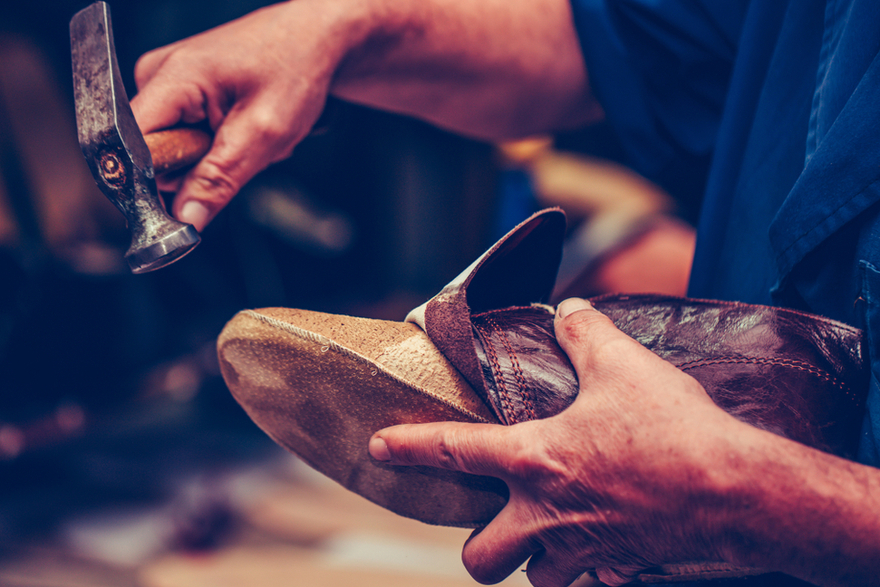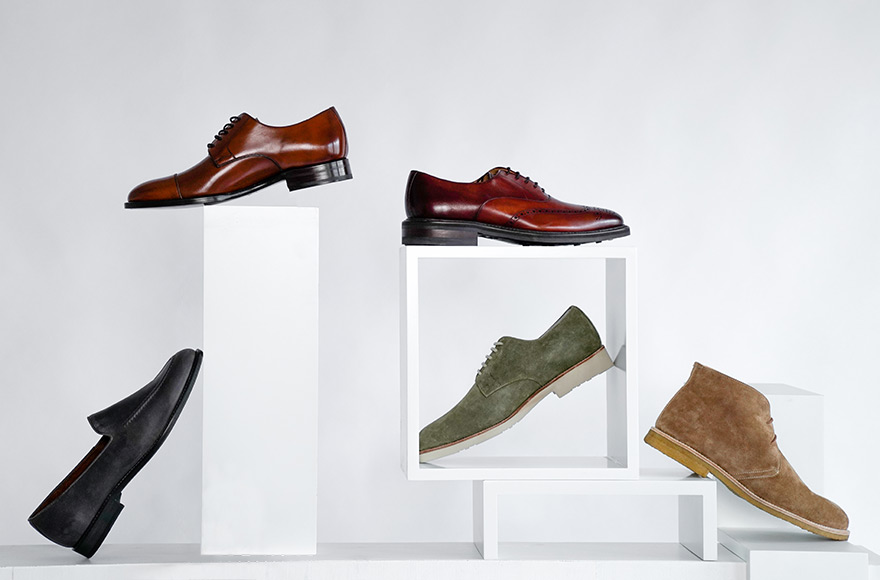
Assembling constitutes the core component of the shoemaking process. This stage involves building a premium, Goodyear-welted men's shoe from a number of materials.
First, the insole is temporarily affixed beneath the shoe lasts with three nails. Next, the rubber ridge is attached to the insole, which makes it easier to stitch the shaft to the welt later on. The laced shoe shaft is then stretched and adjusted over the last, and fixed to the insole with nails and hot glue.
The leather is left to rest for a while on the last—the goal is to perfectly and lastingly mould the leather around the shape of the last. This stage of the process can take from half an hour to two weeks.

The welt is stitched to the upper and the lining
The welt that gives this type of shoe its name is a firm strip of leather that is lined up as closely as possible against the shaft and rubber ridge. Once the welt has been positioned this way, a Goodyear stitching machine is used to stitch it together in a single step with the upper, lining and rubber ridge. The resulting stitching is known as a Goodyear stitch—this is the signature bottom seam for men's shoes made using this production method.
On most Goodyear-welted shoes, the welt does not completely encircle the insole, as the part around the heel is excluded. At the heel, the shaft is nailed directly to the insole. A hoof-shaped strip of leather known as piping is used to combine the upper with the insole. The piping is placed beneath the heel and firmly nailed to the insole and through the shaft with small brass pins. After this step has been completed, the last, which was first prepared in the design department, is removed from the shoe it has been used to shape.
Before further adjustments, a shank is incorporated for reinforcement
Since the surface of the insole lies lower than the rubber ridge and welt encircling the shoe, a shank is incorporated between the heel and the front of the foot to serve as reinforcement.
At this stage, the inner surface of the shoe is still uneven and pocked with indentations. A so-called filler layer is introduced to correct this. This layer is composed of flexible and moveable materials; usually, cork is used. The filler layer creates a smooth and even surface, upon which the insole is mounted. Adhesive is applied to the welt's narrow surface, and the insole is then glued to the welt. After the insole has been attached this way, it is tightly stitched to the welt with the use of a Goodyear outsole-stitching machine.
Seam holes are skillfully incorporated into broguing
Once a men's shoe has been completely assembled, the pins used in the upper portion of the heel to prevent the shaft from slipping are removed, and the resulting holes in the leather are sealed. If the shoe in question features decorative perforation, then the holes are skillfully incorporated into broguing. If the leather surfaces of the shoe is smooth, though, then these resulting seam holes are concealed. After subsequent ironing, dyeing and polishing these holes are no longer visible. The outsole and edge of the heel are abraded, the visible portion of the welt is decorated, the double seam is compacted, and the heel and tips of the sole are dyed. Finally, the shoe manufacturer inserts a half-insole bearing the shoe brand's logo before subjecting the shoe to a thorough cleaning.
Additional Elements of Shoemaking
- Designing
- Shoe Lasts
- Stamping
- Sewing
- Shoe Room
Handmade and goodyear-welted Shoes at Shoepassion.com
High-End Shoes for men & women ★ Various styles & designs ★ High quality ★ Fair & sustainably produced in Europe ★ Exellent value for money ★ Many models on sale













